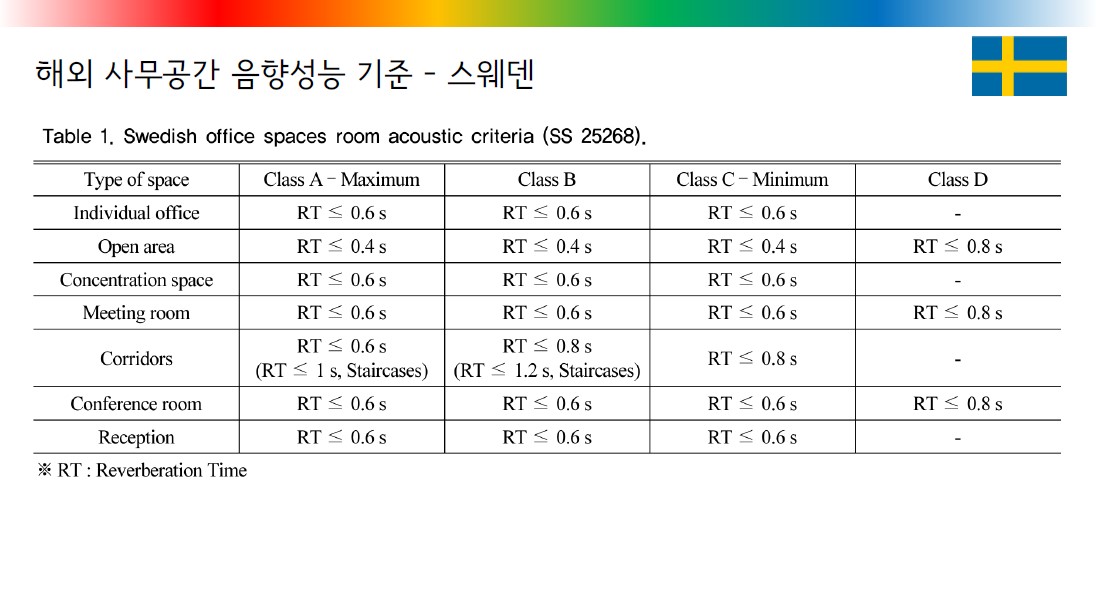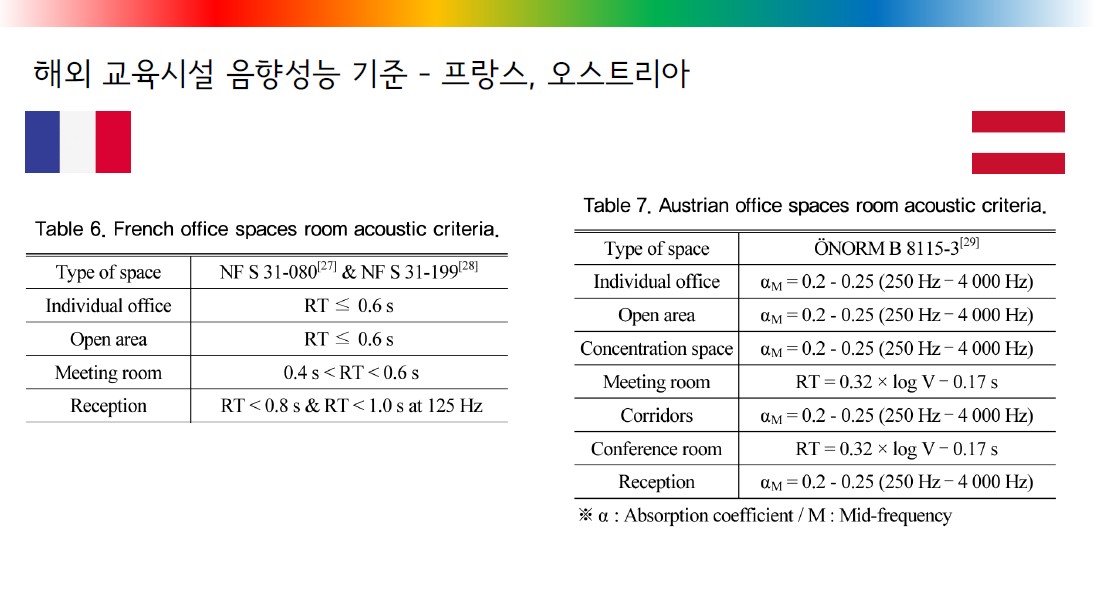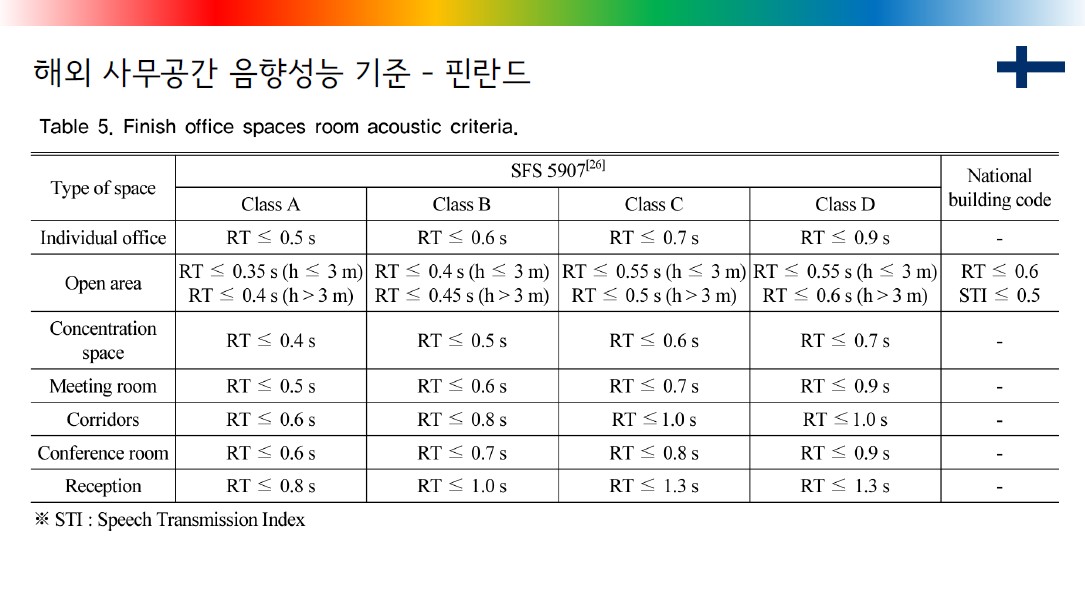The role of a library
A public library not only serves its original purpose of collecting, organizing, preserving, and accumulating materials but also should provide information to local residents in a convenient and accessible manner. It should create an information environment that satisfies the information acquisition needs of all layers of the population. Additionally, it should remain faithful to its role as a venue for lifelong education, ensuring no neglect in providing cultural and artistic information, events, and more.
"(Kim, Sunae. A Study on Deriving Standards for the Operation of Public Library Spaces. The Korean Journal of Bibliography, Vol. 19, No. 2, 2008)"
The necessity of acoustic performance standards for libraries
Libraries are composed of various spaces, such as reading rooms, book stacks, meeting/discussion areas, exhibition spaces, and performance areas. Each space requires specific acoustical performance standards tailored to its intended use.
Reading rooms and book stack areas require acoustical performance levels similar to office spaces, while meeting/discussion spaces need performance levels equivalent to meeting rooms. Exhibition spaces should adhere to Open Space standards, and performance areas should follow acoustical standards for auditoriums to achieve satisfactory sound levels according to their respective purposes.
A well-designed indoor acoustical environment,
- aids decision-making and reduces the likelihood of errors by workers.
- promotes interaction and enhances overall satisfaction with the space.
- It attracts and retains talent.
In spaces with poorly designed acoustics, user concentration and productivity are compromised.
- In noisy and distracting environments, workers experience an 86-minute decline in daily productivity.(steelcase, lpsos : 2014)
- Students exposed to continuous noise experience a decline in reading comprehension and delayed cognitive development. (Cambridge Univ. 2009 / Cornell Uni. 1993)
The ABCDs of Indoor Acoustic Management
To achieve the acoustic performance goals of the library, we need to consider four key strategies: A, B, C, and D. However, given the recent trend in interior design favoring Open Space layouts, there is limited opportunity to apply effective sound insulation in actual indoor spaces. Consequently, it is crucial to strategically implement sound absorption measures that will have the most significant impact on the occupants of the space.
ABSORB "Absorbs Sound"
BLOCK "Blocks Sound"
COVER "Cover Sound with Sound"
DIFFUSE "Evenly Distribute the Sound"
Korean Acoustic Performance Standards
The 2022 Public Library Construction and Operation Manual from the Ministry of Culture, Sports, and Tourism includes information on some aspects of acoustic design. For instance, it mentions that "the children's resource area should be designed to prevent disturbance from noise." However, the document lacks specific quantitative values, making it challenging for these guidelines to be practically applied in real-world situations.




International Acoustic Performance Standards
Internationally, there are very specific and practical acoustic performance standards for various types of spaces. In particular, guidelines are provided that specify the acoustic performance, especially in terms of absorption, which significantly affects the occupants of the space.
As observed earlier, there are currently no specific acoustic design guidelines in place domestically.
As South Korea has undeniably joined the ranks of advanced nations, it would be desirable for domestic libraries to recognize that sound, though not a visible design element, is a factor that significantly influences user concentration, productivity, and well-being. It would be beneficial if this awareness is reflected in the design process.




Partial content of this information has been quoted from Dr. Jeong-Ho Jung's presentation materials at the National Disaster Safety Institute.
Questions for Identifying a Quality Interior Design Company
In the current situation where there are no existing guidelines for acoustic design in domestic libraries, even so, when selecting an interior design company to create an acoustically favorable library, it would be helpful to refer to the following questions or requests. Applying acoustics doesn't necessarily entail a significant increase in costs, so there's no need to worry excessively about the budget.
Before selecting an interior design and construction company, asking the following questions in advance can significantly increase the likelihood of achieving better acoustic results. While achieving all four steps (1 > 2 > 3 > 4) might be challenging, even considering the first step can yield much better outcomes than not considering any acoustic aspects at all.
1. Are you identifying and designing the space from an acoustic perspective?
- Even just distinguishing the interior space into noisy areas, quiet areas, and mixed spaces before the design process can lead to good results.
- Identifying the space acoustically and zoning make it easier to assess soundproofing and absorption for each area."
2. Are you taking into consideration or aware of the target reverberation time for each room?
- Ask whether they are aware of and considering appropriate target reverberation times for each specific purpose within the indoor space.
- Confirming the target reverberation time is generally not a difficult task, and designs that take this into account can make a significant difference compared to those that do not.
3. What are the target noise level limits you are aiming to achieve, in terms of decibels (dB), for various types of noise?
- Check if there is consideration for the maximum allowable background noise levels based on exposure to internal or external noise.
- Inquire about any plans in place to reduce impact noise, ensure speech privacy, and mitigate noise stress.
4. Can the set criteria and standards be demonstrated through measurements after the construction is completed?
- Verify if it is possible to measure maximum noise levels, sound transmission loss, reverberation time, and background noise.

